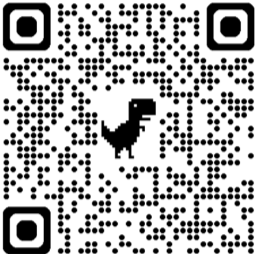hexadecimal conversion game
Decoding the Digital World: A Hexadecimal Conversion Adventure

Source: googleusercontent.com
Ever felt lost in a sea of numbers? Like a tiny ship lost in a vast digital ocean? Don't worry, we can navigate these waters together. This guide will walk you through the mysterious world of hexadecimal conversion, making it clear and friendly (almost like magic!)
-min,h_400,q_80,w_640.png)
Source: senecalearning.com
Understanding the Hexadecimal Code
Hexadecimal is a numbering system that uses 16 digits (0-9 and A-F) instead of just 10. It's super useful for computers because they're amazing with groups of digits, just like we use "10" instead of one and zero. Why is this important? This number system lets us represent lots of information (like colors and text characters!) super concisely.
What exactly is hexadecimal?

Source: cloudfront.net
- It's like a shorthand for numbers, (especially for computers.)
- Instead of 10 digits, it uses 16 (0 to 9 and A to F).
- Makes it quick and easier to represent binary data.
Why use hexadecimal?
- Saves space, time! It's much shorter.
- Works best with binary numbers which computers know like the back of their hand.
- Representing colors and characters, especially with computers.

Source: teacherspayteachers.com
Hexadecimal vs. Decimal – The Key Difference
Imagine two ways to tell time (it makes sense!), either a regular clock (decimal) or using only binary numbers and one and zeros(computers' choice.)
- Decimal: We're used to it! Our everyday counting (0-9).
- Hexadecimal: Using 16 symbols(0-9, A-F). Super efficient for representing things that binary can also express in many places in technology
Understanding the difference is crucial for converting between the systems. It's like learning two languages – once you grasp both, translating becomes fun!
The Steps to Hexadecimal Conversion – Making it Easy!
The easiest thing to understand is a one-to-one relationship. We simply are matching up equivalent value by equivalent value between systems
Here are steps:
-
Understanding Decimal: Recall basic decimal numbers!
- Start with an everyday example of a decimal number such as, 25 or 1000 .
- How many digits?
-
Understanding Hexadecimal: Now introduce 16 letters! These numbers mean values in your hexadecimal system (that represents hexadecimal numbers.)
- Learn the hexadecimal digits (0 to 9, then A-F.) Understand the value A= 10, B=11 and so on
- 3“>
-
Converting from Decimal to Hexadecimal
-
Let's choose an example. Take 22. What do you have for a basic idea of decimal (or numbers we're used to.) Now let's think about a hexadecimal number and start figuring this out. Let's find the hex equivalent!
Step-by-step example with calculations and explanation
Take a decimal number like 4837.
Divide by 16 to find your first hex number value.
<code> 4837 ÷ 16 = 302 remainder 5 302 ÷ 16 = 18 remainder 10 18 ÷ 16 = 1 remainder 2 1 ÷ 16 = 0 remainder 1
Your hex representation will be : 12A5.
It’s 1 (remainder first part from right) then add next values you calculated to write from least significant number, 2 (the middle value you get after calculation) next number you get 10 (10 is A) finally you have 5 as your last digit value- Converting from Hexadecimal to Decimal
Step 1 : Consider a sample hexadecimal number: A3 (using your previously identified conversion values.) A means 10 decimal. and 3 remains 3 decimal Step 2: Multiply each hex digit by the power of 16 corresponding to its position: (10 * 16 ^ 1) + (3 * 16^0) (that is : A represented as 10, decimal conversion power.) Step 3: Calculate: (10 * 16) + (3 * 1) = 160 + 3 = 163Now your conversion to decimal will be 163.
-
Important questions to ponder (to deepen your understanding):
- Can you find any patterns or shortcuts in the conversion processes? (personal exploration)
- How could knowing hexadecimal be helpful for programming? (for future use in technology)
- Why might these processes sometimes be faster/slower, easier/harder, to comprehend than other subjects. (this process/subject is complex?)

Source: wisc-online.com
Real-World Applications
Understanding hexadecimal conversions opens a treasure chest of possibilities:
- Web Development: Colors are often defined using hexadecimal values (for example using specific colors.)
- Computer Programming: Hexadecimal makes it easier to understand binary patterns directly! (Computers like using groups!)
Exploring Common Hex Values
Colors : Some common examples (which uses HEX values or code.)
#FF0000 =Red
#00FF00 =Green
#0000FF =Blue
Try identifying more!
- Graphic Design: Creating beautiful images also involve hex color codes, for example, web color selection, choosing specific shade you're looking for, choosing color harmonies.
Now, armed with this knowledge and your understanding, explore the captivating realm of hexadecimal conversion. You're one step closer to the wonders of the digital world!
(Disclaimer: As an AI, I don't have personal experiences or opinions.)


